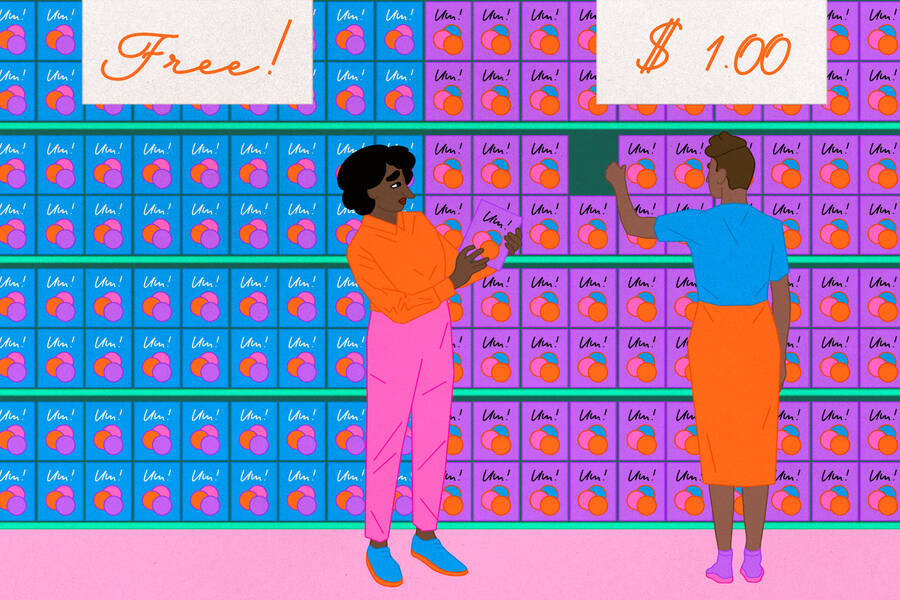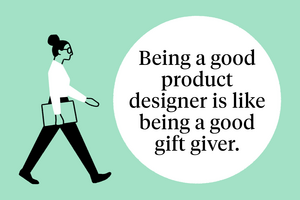Marketing Jun 1, 2024
It’s Painful to Spend Money—Unless It’s a Refund
New research shows why it feels different to spend the money we get back after returning a product.

Jesús Escudero
Quick, which do you think is larger: the amount of money Americans receive in tax refunds or the amount they get back from returned retail purchases? Turns out, it’s not even close: Americans receive more than $743 billion in refunds from returned items—more than double the $335 billion they get in tax refunds.
So what happens to all this money?
It’s a question of interest to Ata Jami, a research assistant professor of marketing at Kellogg.
“A lot of past research has looked at potential benefits of returns to retailers or what may increase or decrease the likelihood of returns,” says Jami. After all, “retailers don’t like returns,” he says. “They want to sell something and be done with it, but need to have return policies, which actually improve sales.”
Much of the existing literature, in other words, looks at refunds from the retailer’s perspective as a problem to solve—and a considerable one, given that Americans return close to 15 percent of all retail purchases.
Jami, in contrast, wanted to look at how customers conceived of these refunds. “I was wondering if people spend or save the money,” he says. “Refunds are fungible, just like money you have in your wallet or bank account, so rationally speaking it shouldn’t change your behavior with it.”
But Jami believed people might spend refunded money differently from other funds, in part because he had noticed himself treating refunds differently. If a consumer had already spent that money once, he wondered, might they be more willing to part with it again?
Indeed, across a series of studies, Jami found that participants spent refunded money more easily and on more luxurious, unplanned items. He attributes the effect to a phenomenon called “pain of paying,” which is lower when people are using money they’ve already spent.
When money comes back
Jami examined refund-related spending patterns through multiple experimental studies.
For example, in an initial study, participants were told to imagine they had $100 to spend on pants at a clothing store and had found the perfect-fitting pair. However, some were told they had just returned items worth that much at the store, while others were told the money would come from their wallet. All were to imagine that on their way to the register they saw a shirt they really liked. Those who believed they were spending refunded money were 28 percent more likely to make an unplanned purchase than those who would need to reach for their wallet. This supported Jami’s hypothesis that it’s easier to spend money that we’ve already spent before.
“People usually don’t experience the pain twice for the same money because they don’t consider it an additional deduction from their wallet.”
—
Ata Jami
Jami found similar results when participants were asked to imagine they’d left the clothing store with the purchased pants and saw a cell-phone case they liked in an adjacent store. Those with refunded money in hand were more likely to say they’d purchase the case. In another study with the same premise, Jami found that spending refunded money instead of out-of-pocket money pushed people toward more luxurious items (in this case, a luxurious cellphone case) over utilitarian ones—even when the items in question were the same price.
The results held when consumers made real-world purchase decisions. As part of compensation for participating in an unrelated experiment, some participants were given $5 in cash while others received a flash drive that could then be “returned” immediately to the experimenters for $5 in cash—effectively making that cash a refund. All participants were then given the option to use the cash to buy snacks. Those using refunded money spent 53 percent more on snacks than those who’d been given cash directly.
Tightwads, spendthrifts, and pain of paying
So what makes us more willing to spend refunded money?
It comes down largely to a concept called pain of paying, says Jami. “Different payment experiences cause different levels of pain or pleasure. Paying a ticket or fine results in lots of pain. But necessities like groceries or gasoline are easier to rationalize, which reduces the pain of payment.”
To decide whether to spend, then, we weigh the pain of spending against the pleasure we anticipate from the purchased item.
In a separate study, Jami found that participants felt less pain of paying when spending refunded money to buy an unplanned pair of shoes than wallet money—in this case, 11 percent less, which he was able to statistically link to differences in the groups’ willingness to buy shoes.
“People usually don’t experience the pain twice for the same money because they don’t consider it an additional deduction from their wallet,” says Jami, especially when time has passed since the original purchase.
Another study suggested that people who dispositionally find it painful to spend money—you can think of them as inherent tightwads—are more sensitive to the difference between wallet money and refund money. Spendthrifts, in contrast, are more willing to make an unplanned purchase overall, no matter the source of the money.
Be mindful with refund money
Jami hopes the research helps consumers gain awareness of our natural spending habits. After all, money from a refund “has the same value, the same implication, everything as the money that was not spent before it went toward a purchase. Especially consumers who are concerned about spending should be more mindful of this.”
As a solution, he recommends that those receiving a refund take some time before spending it, with the hope that “maybe after a while you forget about it,” which may bring back some of the pain of payment associated with the returned funds.
Retailers, of course, will have a very different perspective on this. “They want you to spend the refund,” Jami says. “Actual returns are a necessary evil, but retailers also benefit when people return something because they are more likely to spend it in the same place, and to spend it on more luxurious options which usually have higher profit margins.”
Online retailers, for example, could capitalize on the findings from these studies by making purchase recommendations to customers at the point of refund and trying to minimize the gap between returns and subsequent purchase decisions. “Maybe you return a jacket but see lots of opportunities for cross-selling, so the money stays with the store, even if the refund comes as cash and not just store credit,” Jami says. “But overall, the customer and the retailer have opposite incentives for what happens to refund money.”
Sachin Waikar is a freelance writer based in Evanston, Illinois.
Jami, Ata. 2024. "Generous Returners, Vanishing Refunds: How Consumers Spend Monetary Refunds of Returns." Working paper.



